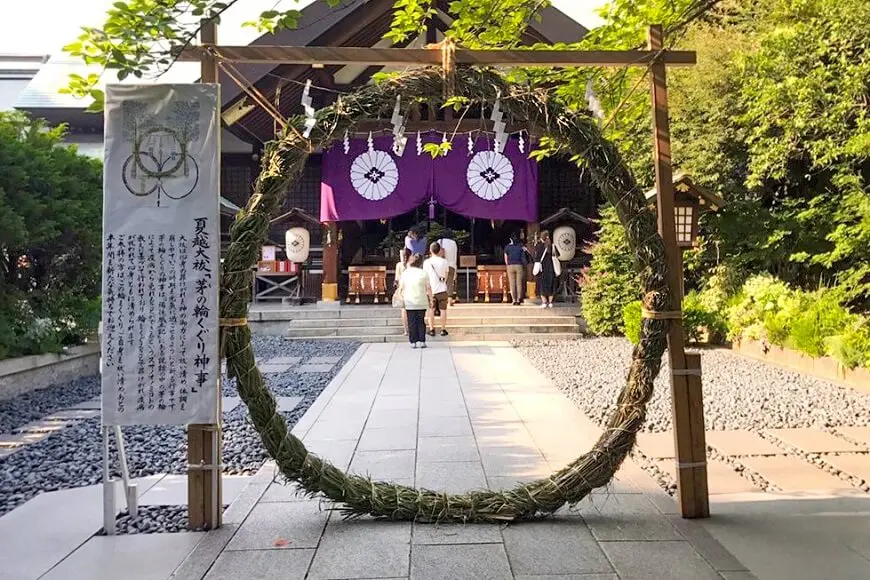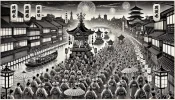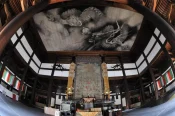Kyoto’s Nagoshi no Harae: Cleanse Your Spirit and Embrace Summer Renewal
Source:OKUMIYA official site
Have you ever felt the need for a fresh start, a clean slate? In Japan, they have a centuries-old tradition to do just that. It’s called Nagoshi no Harae, a Shinto purification ritual held in June to cleanse away the first half of the year’s impurities and welcome the renewal of summer. And what better place to experience this spiritual cleansing than in Kyoto, a city steeped in ancient traditions and spiritual energy?
The History and Meaning of Nagoshi no Harae
Nagoshi no Harae, also known as the Summer Purification Ritual, dates back to the Heian period (794-1185). It’s rooted in the Shinto belief that impurities accumulate over time and can cause misfortune or illness. By participating in this ritual, people can purify their minds and bodies, ensuring a healthy and prosperous second half of the year.
The most iconic symbol of Nagoshi no Harae is the chinowa, a large ring made of reeds. Participants pass through the chinowa in a figure-eight pattern, symbolizing the casting off of impurities and the renewal of their spirit. Another important aspect of the ritual is the offering of katashiro, small paper dolls that are believed to absorb impurities and are then ritually burned or floated down a river.
Experiencing Nagoshi no Harae in Kyoto
Several major shrines and temples in Kyoto hold Nagoshi no Harae ceremonies. Here are a few notable ones:
1.Kitano Tenmangu Shrine
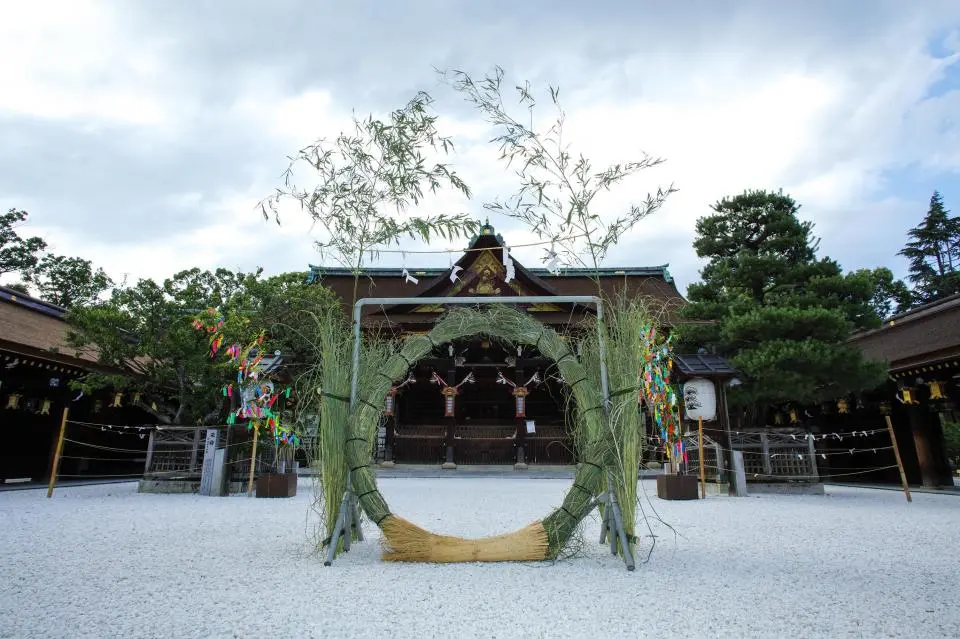
Known for its association with the deity of learning, Sugawara no Michizane, this shrine offers a unique Nagoshi no Harae experience. The large chinowa (ring of reeds) is set up in the shrine’s courtyard, and visitors can write their wishes on katashiro (paper dolls) and tie them to the chinowa before passing through.
2.Kamigamo Shrine
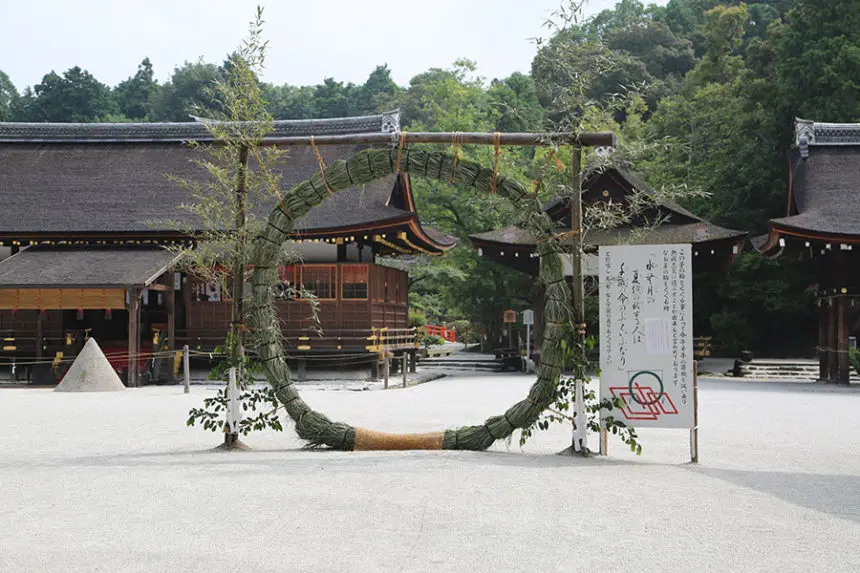
Another UNESCO World Heritage site, Kamigamo Shrine is closely associated with Shimogamo Shrine and also holds a significant Nagoshi no Harae ceremony.
3.Kurumazaki Shrine
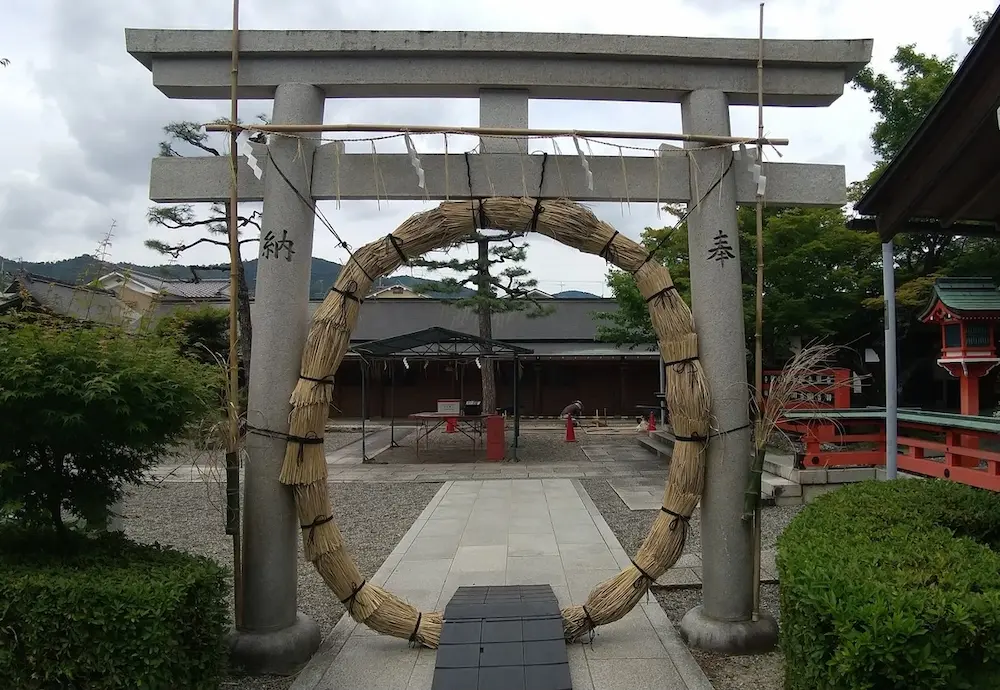
This shrine, located in the western outskirts of Kyoto, is dedicated to the god of transportation and travel. Its Nagoshi no Harae ceremony is known for its peaceful atmosphere and beautiful natural surroundings.
Why You Should Participate in Nagoshi no Harae
Participating in Nagoshi no Harae is not only a cultural experience but also a chance for personal renewal. The ritual offers a moment of reflection and introspection, allowing you to let go of negative energy and embrace a fresh start.
Many people find that participating in Nagoshi no Harae helps to reduce stress, improve mental clarity, and enhance their overall well-being. It’s a way to connect with your inner self, the natural world, and the spiritual traditions of Japan.
Tips for Participating in Nagoshi no Harae
- Dress respectfully: Wear modest clothing that covers your shoulders and knees.
- Arrive early: Nagoshi no Harae ceremonies can get crowded, so arrive early to avoid long lines.
- Follow the instructions: Pay attention to the instructions given by the shrine staff and follow the proper etiquette for the ritual.
- Make a donation: It’s customary to make a small donation to the shrine before passing through the chinowa.
- Take your time: Don’t rush through the ritual. Take a moment to reflect on its meaning and significance.
Conclusion
Kyoto’s Nagoshi no Harae is a beautiful and meaningful tradition that offers a chance for purification, renewal, and spiritual connection. Whether you’re seeking a fresh start or simply want to experience a unique aspect of Japanese culture, Nagoshi no Harae is an event you won’t want to miss. So, if you’re in Kyoto in June, take a moment to cleanse your spirit and embrace the summer renewal with this ancient ritual.
Reviews
There are no reviews yet. Be the first one to write one.
